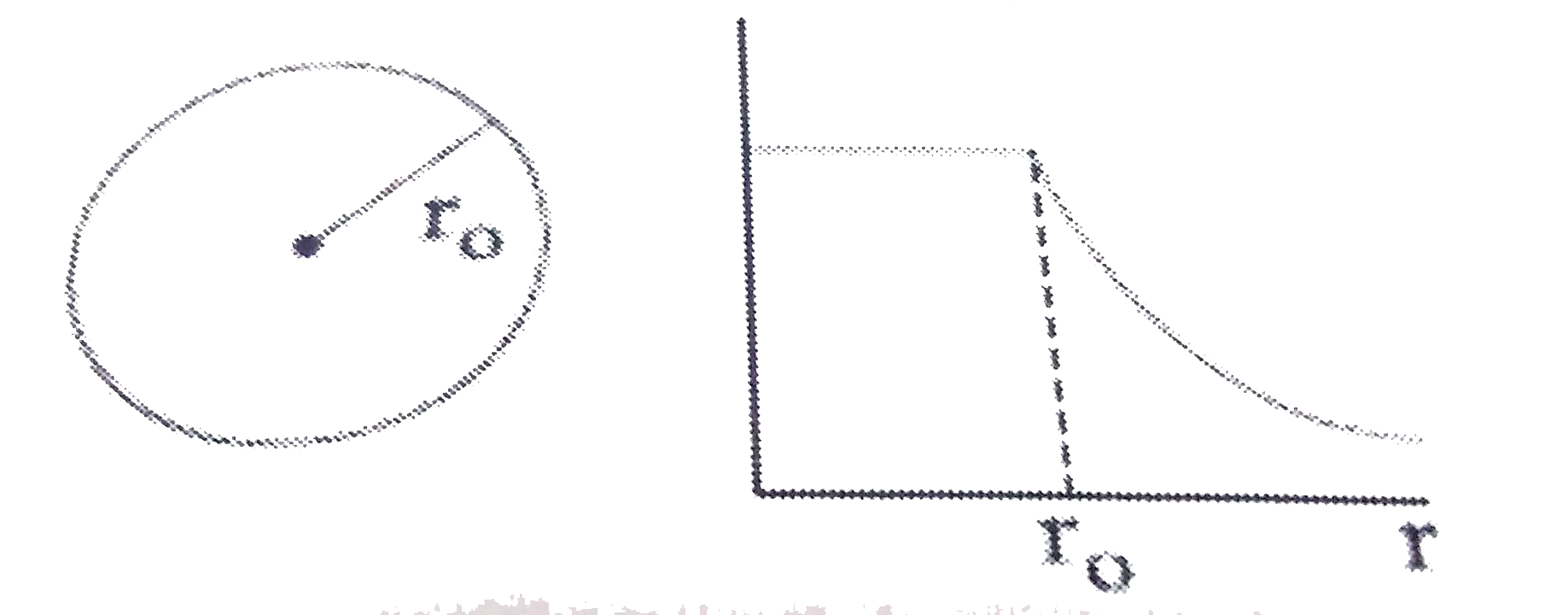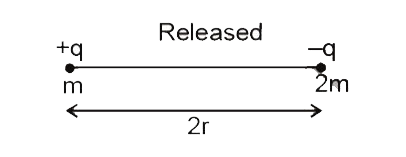The given plot shows the variation of U, the potential energy of interaction between two particles with the distance separating them r,
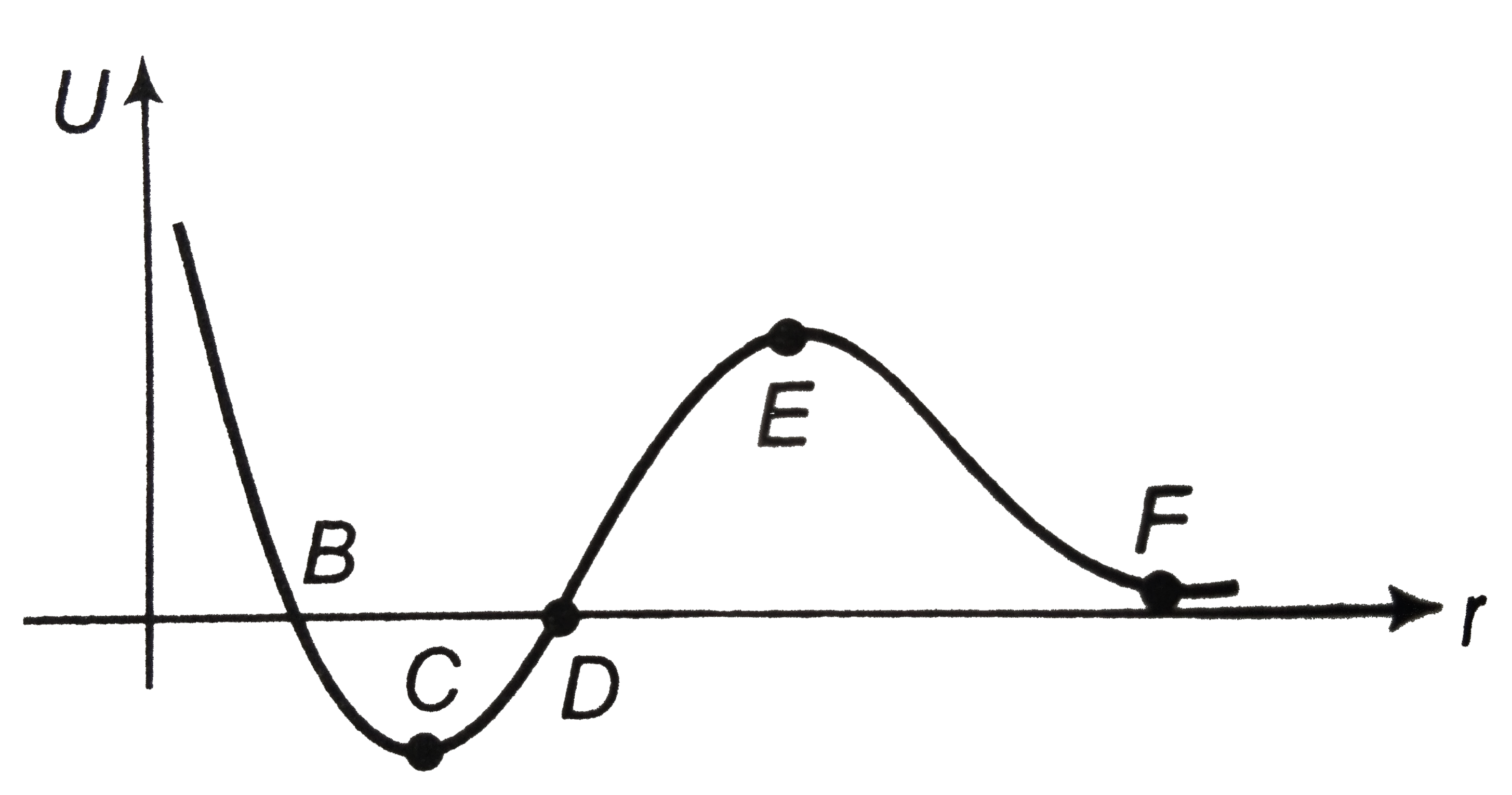
A
1 and 2
B
1 and 4
C
2 and 4
D
2 and 3
Video Solution
Text Solution
The correct Answer is:C
Conservative force is equal to negative gradient of potential energy function so →F=−dUdr
At point of equilibrium Force is zero and so dUdr=0 i.e at point of equilibrium slope of (U-r) curve must be zero. At C,P.E is minimum so C is a point of stable equilibrium.
Between E and F slope of potential energy curve is negative so
By F=−dUdr, force is positive i.e.repulsive.
|
Topper's Solved these Questions
Similar Questions
Knowledge Check
Electric potential energy V between two charges varies with distance (r) between them as
AV∝rBV∝1rCV∝r2DV∝1r2Figure given below shows the variation of potential energy function U(x), corresponding to a particle lying in a one dimensional force field. The force acting on the particle at x = 2 m is:
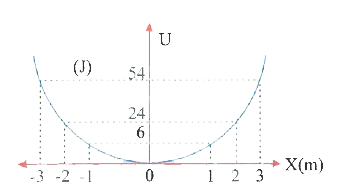 A−12NB−24NC−16ND−8N
A−12NB−24NC−16ND−8NThe following plot shows the variation of potential energy (U) of a system versus position (x). From the graph we can interpret that :
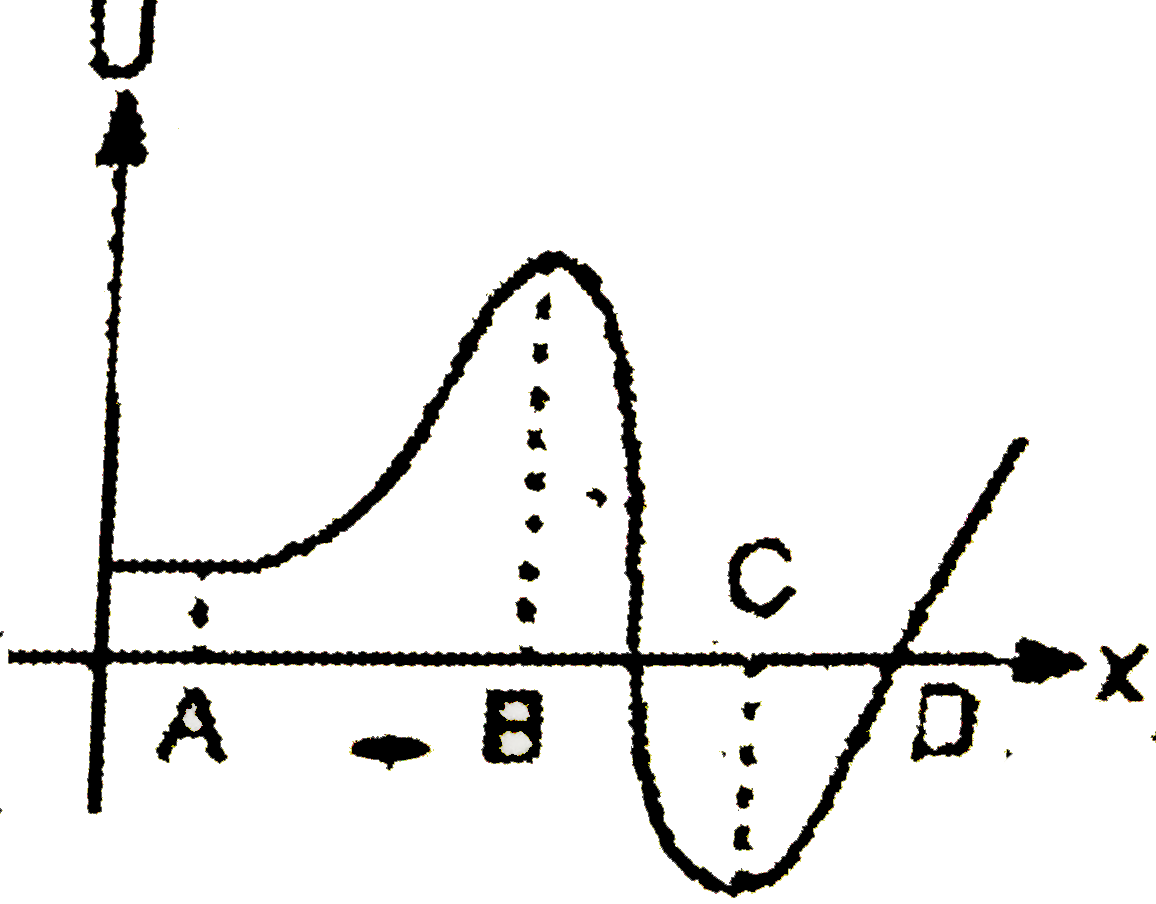 APoint D is position of neutral equilibriumBPoint B is position of unstable equilibriumCPoint C is position of stable equilibriumDPoint A is position of neutral equilibrium
APoint D is position of neutral equilibriumBPoint B is position of unstable equilibriumCPoint C is position of stable equilibriumDPoint A is position of neutral equilibrium
The given graph shows variation (with distance r from centre) of:
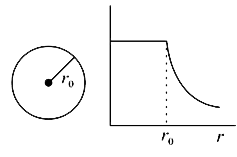
View SolutionThe given graph shows variation (with distance r from centre) of:
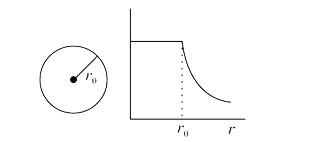
View Solution(a) Draw a plot showing the variation of potential energy of a pair of nucleons as a function of their separation. Mark the regions where the nuclear force is (i) attractive, and (ii) repulsive.
(b) In the nuclear reaction
n+ 23592U→ a54Xe+ 97bSr+2n determine the values of ‘a’ and ‘b’.
View SolutionDraw a graph showing the variation of potential energy between a pair of nucleons as a function of their separation. Indicate the regions in which the nuclear force is (i) attractive, (ii) repulsive.
View SolutionVariation in force between two charges and their distance is given by:
View Solution

